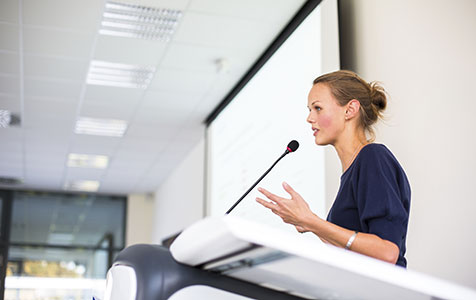There’s a whole lot more to networking than turning up to an event with a pitch and a business card.


There’s a whole lot more to networking than turning up to an event with a pitch and a business card.
One of the questions I’m most frequently asked at my seminars across the US is: “Where should I network to get the most leads?”
My immediate reply is, “Wrong question”.
Networking is not about getting; it’s about meeting, engaging, establishing rapport, finding common ground, and giving.
And networking works if you make a strategic plan, target people and places, allocate the time, prepare before you go, and do it consistently.
There are 4.5 types of networking.
1. Attending and participating in events.
2. Being in charge of an event and bringing people together.
3. Being in charge of a group or association.
4. Speaking at a local or national event, and being the star of the show.
4.5 Volunteering in your community.
Here are a few specific examples of what you can do.
Attend cultural events or sporting events. They give you a chance to see old friends and meet new ones.
Lead a group at your local chamber of commerce. It’s much more powerful to lead than go to a business after-hours to meet other salespeople and troll for leads.
Speak at a trade show. Don’t just exhibit and look for leads. Leaders attend workshops. By addressing attendees with a value message, they will all stop by your booth, compliment you on your speech, and want to talk to you.
Speak for a Rotary group. You can be a member of Rotary and basically see the same 50 people every week, or you can give a 20-minute speech at each Rotary club (and all civic associations) in your region. If you speak at a civic organisation once a week, and offer more information in exchange for a business card, it’s likely you’ll get 50 leads a week – of people who will be happy to take your call.
Volunteer for the Red Cross or any of the hundreds of community-based groups nearby. Attend charitable events or even give out water at a local fun run. You’ll meet like-minded people, and you feel great for helping.
There are three ways to choose which events to attend:
• go where you love to go;
• go where your customers go; and
• go where your prospects might be.
Here are a few fundamental ground rules to follow that will ensure maximum enjoyment and maximum benefit.
Arrive early. Get there at the start and meet as many people as possible.
Leave late. Maximise your time, especially if the room is full of decision makers.
Don’t drink. You don’t need a beer. You need money. Beer and money don’t mix.
Have something of value to say. Play yourself down. Try to find out what they do. If they ask what you do, have a brief explanation, and a great business card. Your 30-second commercial needs to start with a question.
Talk about positive things and people.
So, when you’ve networked and met someone you want to get to know better ...
• Where is the best place to meet?
A coffee shop. Someplace casual. Someplace inexpensive. Someplace with WiFi. Someplace where you can sit and talk.
• When is the best time to meet them?
Early, for breakfast. You can avoid traffic, and make a powerful connection.
• What do I say and how do I get to know this person better?
Imagine meeting someone for morning coffee, and rather than asking what he/she does (which you could have found out on Google or his/her website), you hand him/her two leads of people in your network that might be good candidates for his/her business. That’s netweaving. And it works. But it requires work on the part of the referring person – you.
“But Jeffrey”, the ask, “what about my 30-second personal commercial? What about my elevator speech? How do I make a sale?”
Note well: Do what I have told you above, and people will want to buy from you – no pitch needed.






